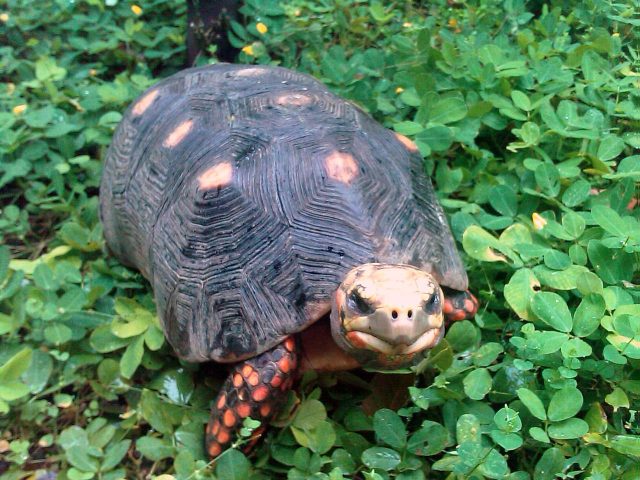Type the name of the breed you're looking for below
[wpdreams_ajaxsearchlite] Don't see the breed your're looking for? Click here and let us know!
Red-Footed Tortoise
| Place of Origin and Range | Red-footed tortoises are found from Panama to northern South America. |
| Description | They have a dark-coloured loaf-shaped carapace (back shell) with a lighter patch in the middle of each scute (scales on the shell), and dark limbs with brightly coloured scales that range from pale yellow to dark red. |
| Morph Patterns Available | Yes |
| Adult Size | Can grow up to 20in(50cm) |
| Accommodation | Their natural habitat ranges from savannah to forest-edges around the Amazon Basin. |
| Lifespan | Can live 35+ years |
| Feeding / Diet | The bulk of the diet is some sort of fruit or seed pod. Common fruits come from cacti (Opuntia), figs (Ficus), pehen (Acacia aroma), Spondias, Annona, Philodendron, bromiliad, and more. Up to five different kinds of fruits are often found in fecal pellets. The entire fruit is eaten, and the seeds are passed and can germinate, giving red- and yellow-footed tortoises a significant role in seed dispersal. Red-footed tortoises have been observed at the base of fruit trees, apparently waiting for fruit to fall. |
| Other Considerations | Watch for theses health concerns carefully with your tortoise. Vitamin A Deficiency: Vitamin A is an important nutrient for your tortoise’s health. It is found in his diet in the form of leafy green, orange or yellow vegetables, liver, and fish. If your tortoise is not getting enough Vitamin A, he can suffer serious health problems. Always check to make sure that your tortoise does not have swollen eyelids, as this is the main sign of a Vitamin A deficiency. Also, check for weight loss, nasal discharge and infected skin. Any of these symptoms could point to a deficiency. If you think your tortoise may not be getting enough Vitamin A, you should take him to the veterinarian to get a firm diagnosis. Shell Problems: Your tortoise's shell is very important to his overall health. There are many potential problems that could occur, so you should be on the lookout at all times. Respiratory Disease: Respiratory infections have symptoms similar to vitamin A deficiency, including swollen eyelids and runny nose, so you should take your tortoise to the veterinarian to get a proper diagnosis if you suspect either. More serious infections will be characterized by breathing through the mouth, mucus in the mouth, and wheezing. Always make sure your tortoise’s environment has the proper amount of humidity, as this will help prevent respiratory problems. |



